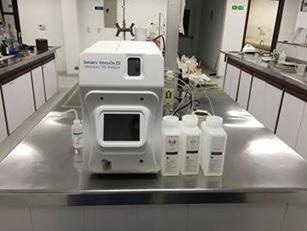Challenge
Ingenio Pichichi is a leading Colombian sugar mill that uses sugarcane in its general manufacture for products for both its domestic and global customers. Its main objectives include maintaining environmental responsibility, operational excellence and profitability.
Amongst its products are honey, raw sugar, white sugar and brown sugar - processing around 4,300 tons of sugarcane per day. Given this capacity, it is of utmost importance to optimize production and avoid any leaks of the valuable product into process streams.
The facility’s on-site lab collects data to help make informed decisions that boost productivity and increase cost savings.
Processing sugarcane into consumer goods requires a series of steps: grinding, clarification, filtration, evaporation, crystallization and centrifugation. Evaporation incorporates a multiple-stage distillation system for the concentration of the sugar juice. The initial stage uses a boiler to feed a clean steam source to the system.
The resulting evaporation passes on to the next stage and continues throughout all steps. The steam from the final stage is collected in a cooling tank after being condensed using a barometric condenser. The condensed water is collected from each stage and added to the cooling tank to later be used as cooling water.
To safeguard equipment assets, including boilers and condensers, it is crucial that the condensed water does not contain any sugar or sugar juice. This helps reduce the risk of product and profit loss.
Thus, it is vital to ensure rapid, effective monitoring of the system for any leaks or elements of concern. Early detection of a product leak can allow operators to stop, divert or refine a unit operation before incurring any unwanted damage or costs.

Figure 1. Sievers* InnovOx Laboratory TOC Analyzer used for Leak Detection. Image Credit: Veolia Water Technologies & Solutions
*Trademark of Veolia; may be registered in one or more countries.
Solution
The Colombian mill previously used pH, conductivity, alkalinity, brix degrees and HPLC analysis to identify any product leaks. However, sugar is non-ionic at ambient conditions with a neutral pH, making most of those methods unusable for accurate leak detection.
Throughout production at elevated pressures and temperatures, sugar starts to break down into harmful compounds that may cause equipment corrosion, deposition and scaling. In addition, when sugar starts to break down, it loses its HPLC signature peak. This creates an urgent need for a rapid, reliable and precise method to measure sugar.
Sugar is a carbohydrate primarily made up of carbon, oxygen and hydrogen. It is easy to detect with the sum parameter measurement of TOC, which can quantify all organic compounds in a solution precisely.
TOC analyzers function by oxidizing organic molecules to carbon dioxide (CO2) and detecting the CO2 that has evolved.
Ingenio Pichichi acquired a Sievers InnovOx Laboratory TOC Analyzer (Figure 1) as an investment to characterize and profile the system. This facilitated the creation of control limits for steam, condensate and cooling water, which supports production optimization while maximizing profitability.
TOC must be monitored at the following points:
- Feed to the first boiler
- Condensed water out of each stage
- Feed and effluent of the cooling tank
The Sievers InnovOx Lab uses Super Critical Water Oxidation (SCWO) and Non-Dispersive Infrared (NDIR) Detection across an extensive range of carbon from 50 ppb (µg/L) to 50,000 ppm (mg/L). TOC values expected at the mill are inclined to range from 200-500 ppm; however, any leaks or other issues may generate spikes from 5,000 to 20,000 ppm TOC.
Conclusion
TOC analysis offers an accurate, easy-to-use analytical tool to identify leaks that could cause equipment damage and expensive production losses. A leading Colombian sugar mill, Ingenio Pichichi, sought to improve the monitoring and performance of its water streams.
The evaporation stages of its milling process, which necessitate the repetitive heating and cooling of consecutive steam and condensate, were significant points for sugar leak detection. By using TOC monitoring with the Sievers InnovOx Lab at these key steps, Ingenio Pichichi can reach its profit goals and maintain both operational and environmental objectives.

This information has been sourced, reviewed and adapted from materials provided by Veolia Water Technologies & Solutions.
For more information on this source, please visit Veolia Water Technologies & Solutions.